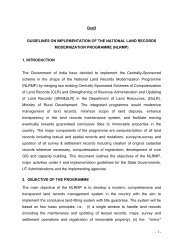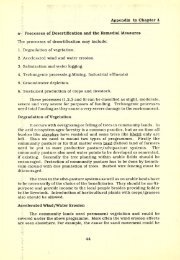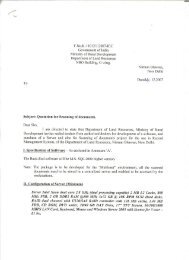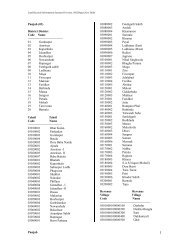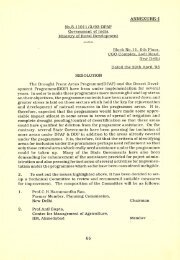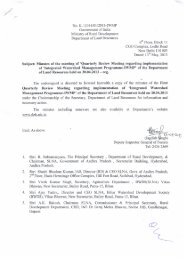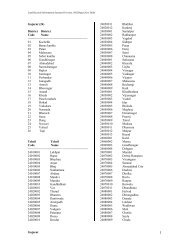Uttarakhand - Department of Land Resources
Uttarakhand - Department of Land Resources
Uttarakhand - Department of Land Resources
You also want an ePaper? Increase the reach of your titles
YUMPU automatically turns print PDFs into web optimized ePapers that Google loves.
distribution in village markets; there is not much statistical evidence <strong>of</strong> development <strong>of</strong><br />
mandis and markets to dispose <strong>of</strong>f any surpluses.<br />
As expected, the yields are not very high in <strong>Uttarakhand</strong> as a whole and also the<br />
productivity <strong>of</strong> the hill districts is generally lower than the state average. This is because<br />
<strong>of</strong> the small and fragmented land holdings, low use <strong>of</strong> quality seeds, limited irrigation<br />
facilities, lack <strong>of</strong> extension and low farm mechanization. Due to the small size <strong>of</strong> the<br />
land holdings, farm mechanization was not technically feasible. On an average, about<br />
two-third <strong>of</strong> the land holdings are marginal in size with an average land <strong>of</strong> less than 0.66<br />
ha in all the districts.<br />
The majority <strong>of</strong> <strong>Uttarakhand</strong> agriculture is rainfed and there is not much surplus for the<br />
market. As a result most <strong>of</strong> the able-bodied men have migrated to other places in<br />
search <strong>of</strong> employment. Only women are left in the hills and they have started looking<br />
after the farms. The challenge is to change this structure and create employment<br />
through agriculture. This could be done by diversifying the agricultural pattern so as to<br />
create alternative income and better living standards. The alternative areas <strong>of</strong><br />
diversification are towards horticulture crops, spices and condiments, tea plantations,<br />
and herbal and medicinal plants. Development <strong>of</strong> organic farming is another option for<br />
agriculture-based hill regions. Development <strong>of</strong> animal husbandry and forest resources<br />
are already a part <strong>of</strong> hill livelihood, which has limitations on its further expansion.<br />
Horticulture: In addition to staple foods, the hill districts <strong>of</strong> <strong>Uttarakhand</strong> have diversified<br />
into the production <strong>of</strong> condiments and spices like chillies, ginger, and garlic. The area<br />
under these is as high as 2275 ha in Almora, 1098 ha in Champawat and 962 ha in<br />
Pithoragarh. Some areas in Pauri grow sugarcane also. The area under fruit cultivation<br />
is quite high in Uttarkashi and, in almost all the hill regions, substantial areas are under<br />
vegetable cultivation. There is great potential for diversification into oilseeds like<br />
sesamum, rapeseed, mustard and soybean that will contribute towards increasing<br />
income in the hill regions.<br />
22





